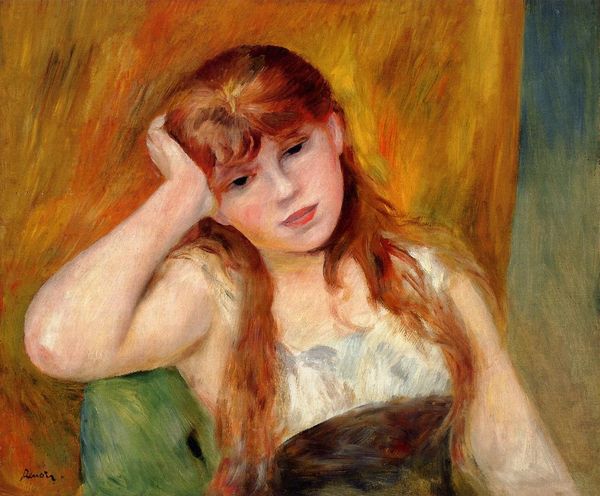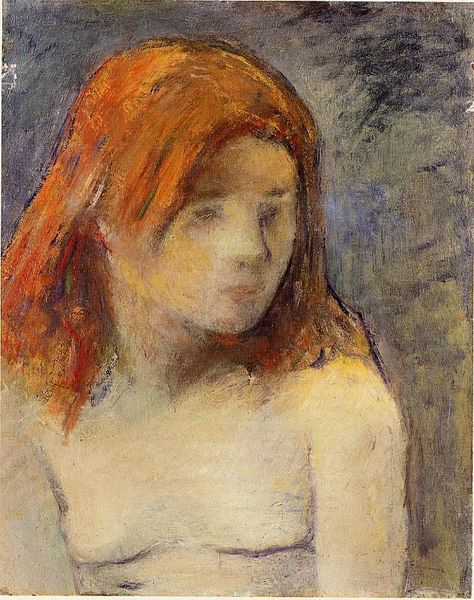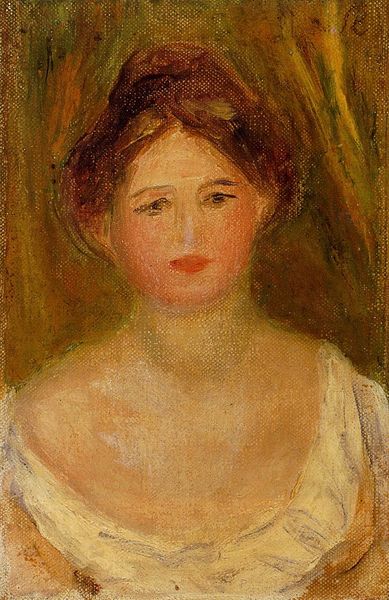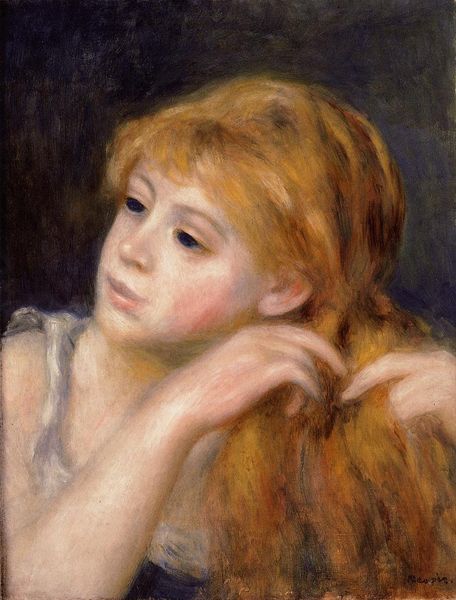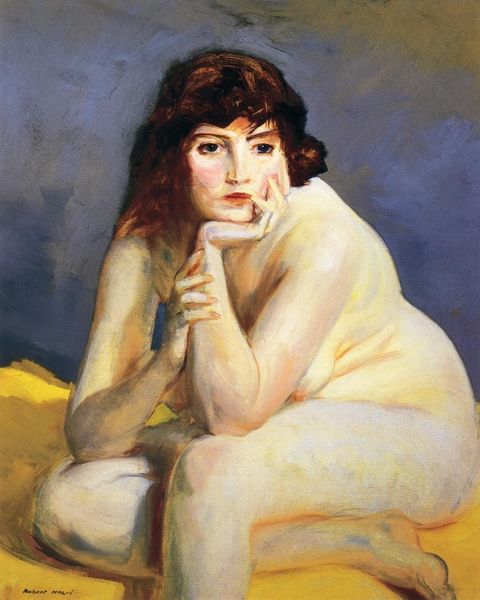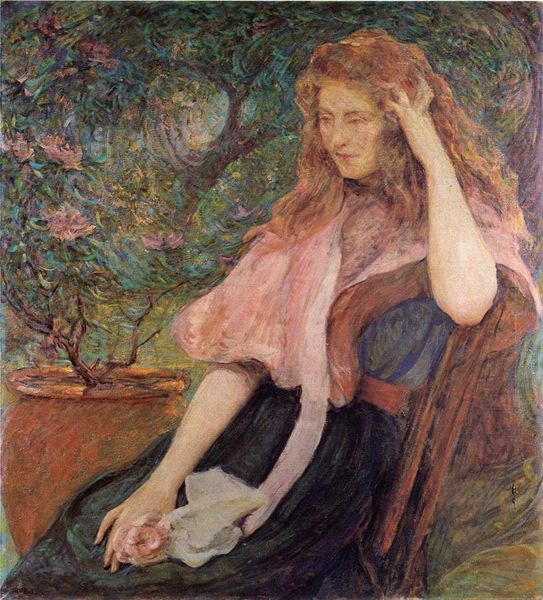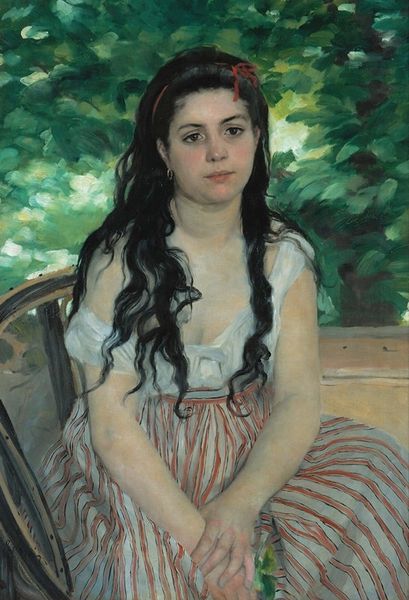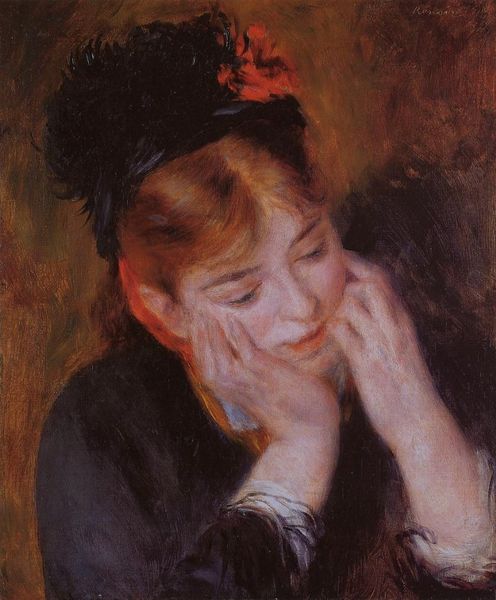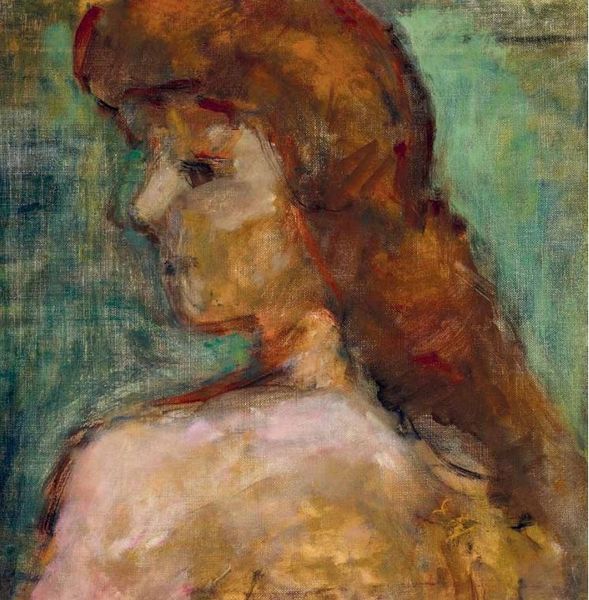
Copyright: Public domain
Editor: This is "Julie Daydreaming," painted in 1894 by Berthe Morisot. It's an oil painting, a portrait really, that evokes such a quiet, introspective mood. What strikes me is the loose brushwork and the focus on the materiality of the paint itself. What can you tell me about it? Curator: Considering Morisot’s Impressionist background and the socio-economic circumstances surrounding the production of paint at that time, it is worth asking how she exploits her tools. Notice the texture; the way the visible brushstrokes give equal weight to figure and ground. What does this do to traditional notions of portraiture? Editor: It almost feels like the sitter is secondary to the act of painting itself, as if Morisot is interested in recording the effects of light and color on canvas, before considering the representation. Curator: Precisely! Think about who had access to quality oil paints, brushes and canvases, versus who was being painted at the time, and in what styles. The material properties of the medium themselves became the central theme of her practice. She wasn't just painting a portrait, she was engaging with, and maybe critiquing, the conventions around painting in the late 19th century. Editor: So it’s a commentary on both representation, and class, by way of the artistic labor embedded in the application of paint? Curator: Yes! The way the brushstrokes become almost performative draws attention to Morisot’s hand and labor within a society where women artists had to struggle for recognition. Also, her plein-air practice has to be seen in light of gender issues – which kind of outside spaces were socially accessible, safe and common for women in her circles. Editor: This makes me consider the act of painting and how it reflected broader cultural and social concerns during Morisot's time. Curator: Exactly! It forces us to question the relationships between artistic creation, the means of that creation, and the culture it reflects.
Comments
No comments
Be the first to comment and join the conversation on the ultimate creative platform.

